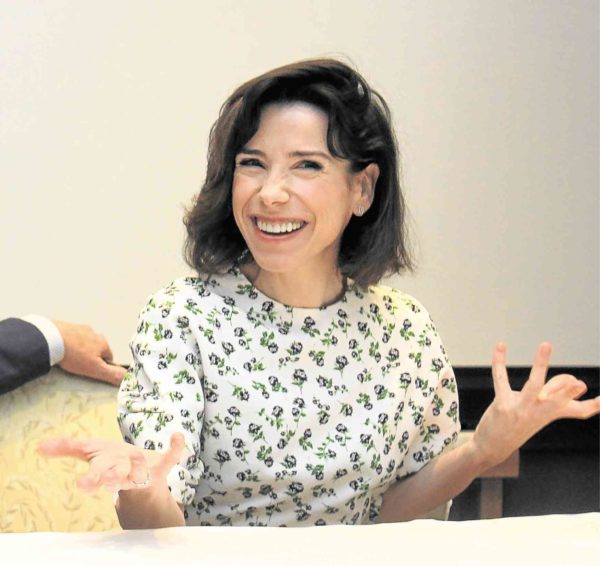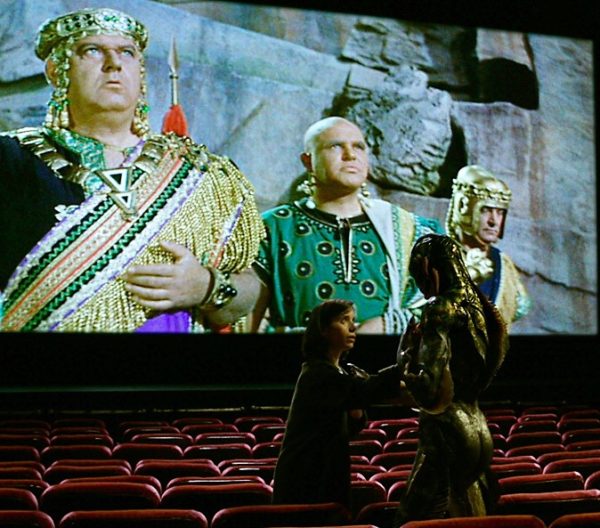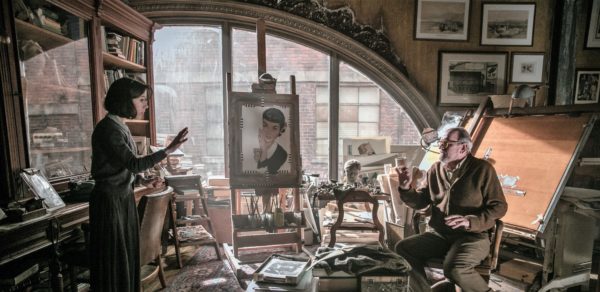Guillermo del Toro, Sally Hawkins talk about their enchanting ‘Shape of Water’
(First of two parts)
LOS ANGELES—“We went through the service door and told a story from the point of view of the people who clean the toilets and empty the garbage cans,” Guillermo del Toro said about his fantasy drama “The Shape of Water.”
The result is a magical, enchanting story that transcends mops and trash and delivers one of the most pleasurable experiences you’ll experience in the cinemas this year.
Sally Hawkins is terrific as a mute cleaning woman who falls in love with a fishman amid the backdrop of 1960s Cold War, Soviet spies, and friendship between working-class folk.
“This is the first time I speak as an adult, about our identity and ‘otherness,’ understanding and empathy, about sex, and what it is to love,” Guillermo also said about his monster-film noir/fairy tale which won the Golden Lion (best picture) in this year’s Venice Film Festival.
Article continues after this advertisementThe Guadalajara, Mexico-born filmmaker wrote the screenplay with most of “Shape’s” actors specifically in his brilliant mind: Sally, Michael Shannon, Octavia Spencer, Richard Jenkins and Michael Stuhlbarg. All are excellent. Guillermo revealed that he wouldn’t have done the film without Sally.
Article continues after this advertisementExcerpts from our separate interviews with Guillermo and Sally:
Guillermo del Toro
What was the new element that you wanted to bring to this movie? I’ve been doing movies for 25 years. The best way to say this is what my director-mentor in Mexico said to me, “You finally exhaled (laughs). You have been so contained for 25 years. You have been inhaling and holding and, finally, you let it all out.” I agree.
It’s a movie that in so many ways flows as a human endeavor. You feel the energy. It feels more effortless and precise than any of the other movies. So, it’s extremely difficult to execute it. If you gauge it in terms of goals and ambitions, it achieves something almost impossible and it feels like a musical, a thriller, a comedy. It’s a love letter to cinema on many genres. So it’s [about] that exaltation.
Does this feel like a new path for you? At age 52, I did stop and say, what am I going to do in this movie that I haven’t done? Very conscientiously and purposely, I said, I wanted to do something different. The movie is a synthesis of many things I have done in the past, but it feels new.
My nine movies before were rephrasings of my childhood mythology. This is the first time I speak as an adult … about adult concerns.
Can you talk about working with water? Almost every two minutes, there’s water in some form in the movie. I wanted the movie to have big set pieces in the water, but we didn’t have the budget to create tank work. So, for the opening and end sequences, we used an old theatrical technique called “dry for wet,” in which we shot them on a stage full of smoke, shot at 36 frames or higher speeds to give a sense of floating.
Every object you see onscreen is wired and “puppeteered.” The camera goes through and we project the light of the water, which is called costics, then digitally add bubbles in postproduction. That allows you complete control and gives you a very operatic effect, almost like a painting.
For the middle sequence, which happens underwater in the bathroom, we sank an entire set in a pool. Again, we didn’t have money, so what we did was, there was a leftover set from a TV show, “The Strain,” which had four poles of steel embedded in the metal, in the concrete, and we created a pool out of that. We built the set to fit in that pool.
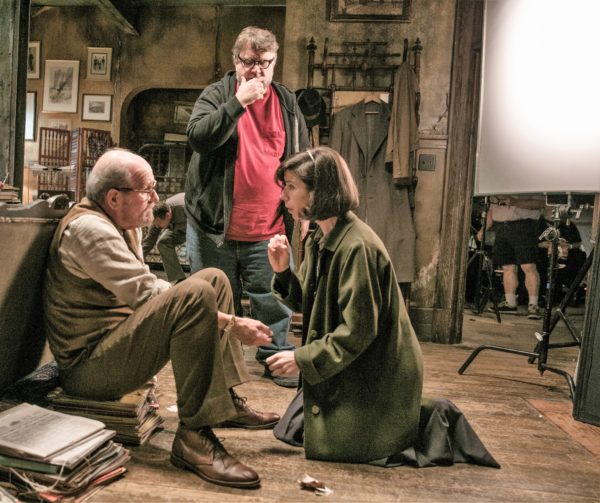
Guillermo del Toro directs Sally Hawkins and Richard Jenkins in “The Shape of Water.” Photo by Fox Searchlight.
The underwater work is very meticulous because we needed the scene to feel like a fairy tale. When you open the movie, the first thing it needs to tell you is that it’s a fairy tale. It’s very dreamlike.
The movie is shot like a musical. The camera never stops moving the entire movie. There’s always a crane and a dolly because the film is an homage to classic cinema.
In the opening scene, Elisa is dreaming of water. She wakes up, boils eggs, masturbates in the water, shines her shoes and goes to work. From then on, people are drinking water, they are on wet streets, in the rain, there’s rain in the windows, sweat, tears.
Elisa rips a calendar and the saying on the back says “Time is a river that flows from the past.” So, it’s water all the time. I used it as a symbol. To me, water is love. The shape of water is the shape of love. It knows no shape, and it takes the shape of whatever is needed. It breaks through the barrier and is gentle and malleable. It’s about understanding the other—the creature is the other.
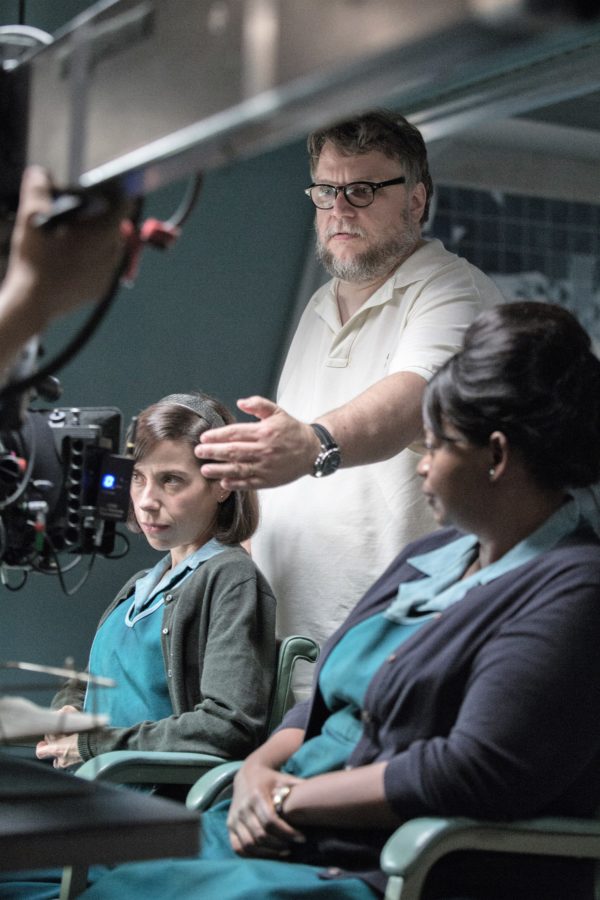
Guillermo del Toro directs Sally Hawkins and Octavia Spencer in “The Shape of Water.” Photo by Fox Searchlight.
Just as some people are starting to think, OK, maybe we can get used to gay marriage. But now, you portray interspecies love. It taps into this cultural confusion about fear. What commentary are you making about the world we live in? Look, the world we live in right now is completely fueled by fear. With fear comes hatred. The only thing that can divide us is ideology.
So, the idea in this movie is the creature, which isn’t an animal or a species. He’s an elemental god that comes from the river. What is beautiful is incredibly natural, the way they fall in love. There’s no prurient or perverse element in that love.
The movie is saying the same thing that Buddha, Jesus and The Beatles all agreed upon, that “all you need is love (laughs).”
How did you come up with the story? It started when I was a kid, like most artistic things that happen with anyone, but it evolved. The first one was when I was 6 years old. I saw “Creature from the Black Lagoon.” I saw Julie Adams swimming above the creature below. I got overwhelmed with the beauty of that image.
I thought, I hope they stay together. In the middle of the movie, of course, they didn’t. It became a home invasion movie for me, in which the creature was a victim. But as I grew up, I saw creatures more as symbols that were spiritual. I saw them as the embodiment of “otherness”… and almost holy in perfection. That’s what my movies have been.
I have been saying this—I don’t do horror. I do a very strange genre that is all my own. I take images from other genres, but I articulate them as fairy tales or fables.
Normally, this story would be told from the point of view of the male superhero character in a suit with a gun that captures the creature. When the creature grabs the girl, he has to be shot, and the girl is saved by this guy.
But, I told a story from the point of view of the people who have empathy with this creature. It’s a complete reversal. When the creature grabs the girl in its arms, it’s a beautiful image. The alchemy for that is what my entire career has been about.
(To be concluded on Sunday)
E-mail [email protected]. Follow him at https://twitter.com/nepalesruben.
